Having attended my first AWE around 15 years ago, I stopped going after several of them because nothing seemed to change. It was always the same companies with slightly improved AR/VR/XR headsets, usually made by someone else, promising to revolutionize how people work, play, learn, etc. However, this never really materialized.
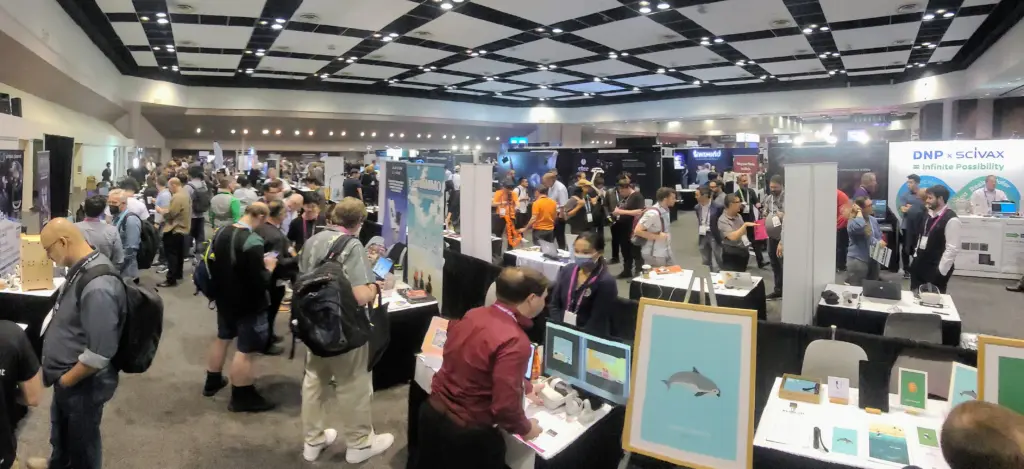
Although respectable strides have been made in industrial and training uses, and to a lesser extent gaming, there hasn’t been an explosive growth trend. This year’s AWE differed in that, from my perspective, it became abundantly clear to investors, consumers, corporations, governments, and educators that this tech is unstoppable. I’ve echoed this sentiment in every discussion I’ve had about XR over the past decade. As I predicted, all the pieces are finally falling into place, including the expectation that all major headsets would be XR.
We can’t discuss AWE and the XR market without mentioning Apple, despite them not attending the conference. Their forthcoming headset will significantly impact the market size, potentially sparking the first multibillion-dollar growth spike next year. Even half a million unit sales represent almost $2 billion in revenue.
I’ll cover three of the most impressive things I saw, regardless of their overall market impact. The most remarkable by far was the ARHT Holographic Capsule. This 500 lb. cabinet-sized box, featuring a clear 4K touch-enabled display, produces the most realistic three-dimensional image I’ve ever seen without glasses. Instead of the commonly used autostereoscopic technology, it places shadows behind the clear 4K display within the depth of the cabinet to create the 3D illusion.
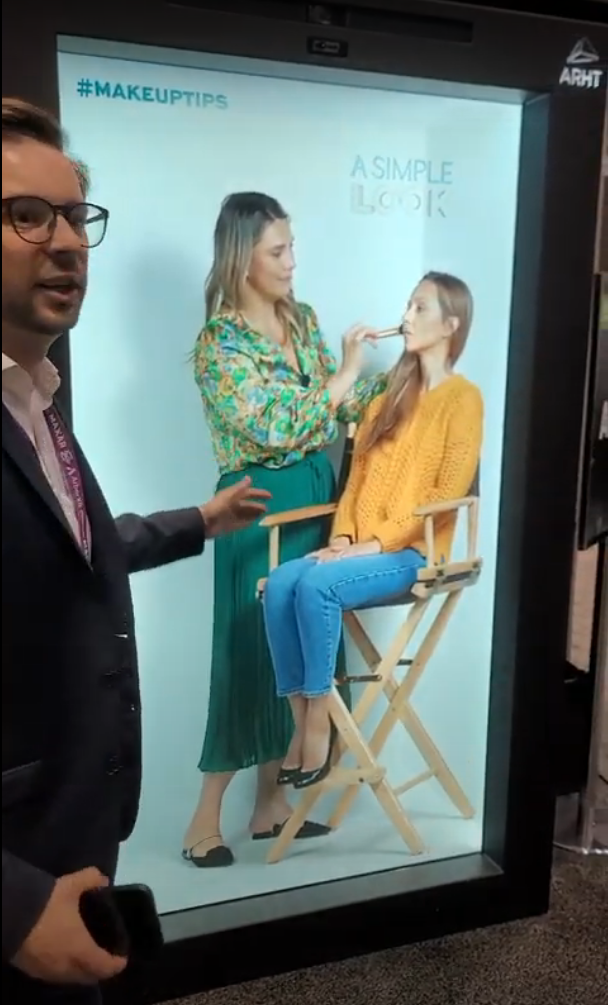
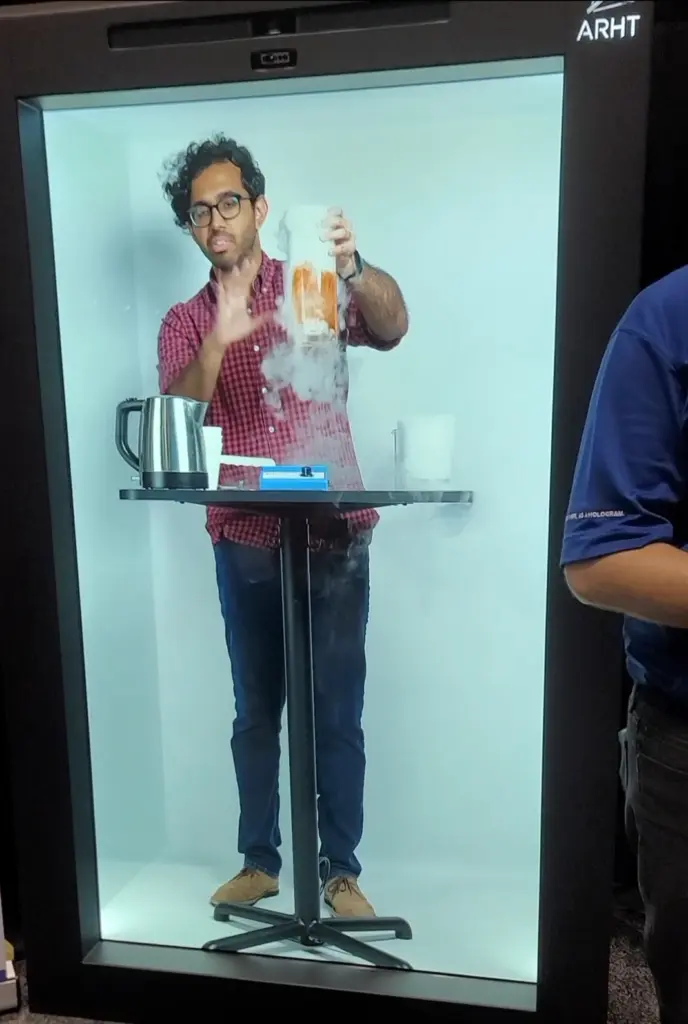
The ARHT capsule primarily targets the commercial market, such as stores, malls, and other high-traffic areas. However, they’re also being purchased by the ultra-wealthy for high-fidelity telepresence. I didn’t get to witness a live telepresence call at the conference, but I’d wager the results would likely be unparalleled in making people feel as though they are in each other’s presence. The pricing is dependent on volume, but a single unit costs about $50k.

The second most impressive experience at AWE was an Nvidia Omniverse demo using the Magic Leap 2. The Magic Leap 2 uses a binocular Waveguide configuration at 1440×1760 resolution per eye, providing a true AR experience that maintains the user’s natural field of view rather than using pass-through AR with cameras.
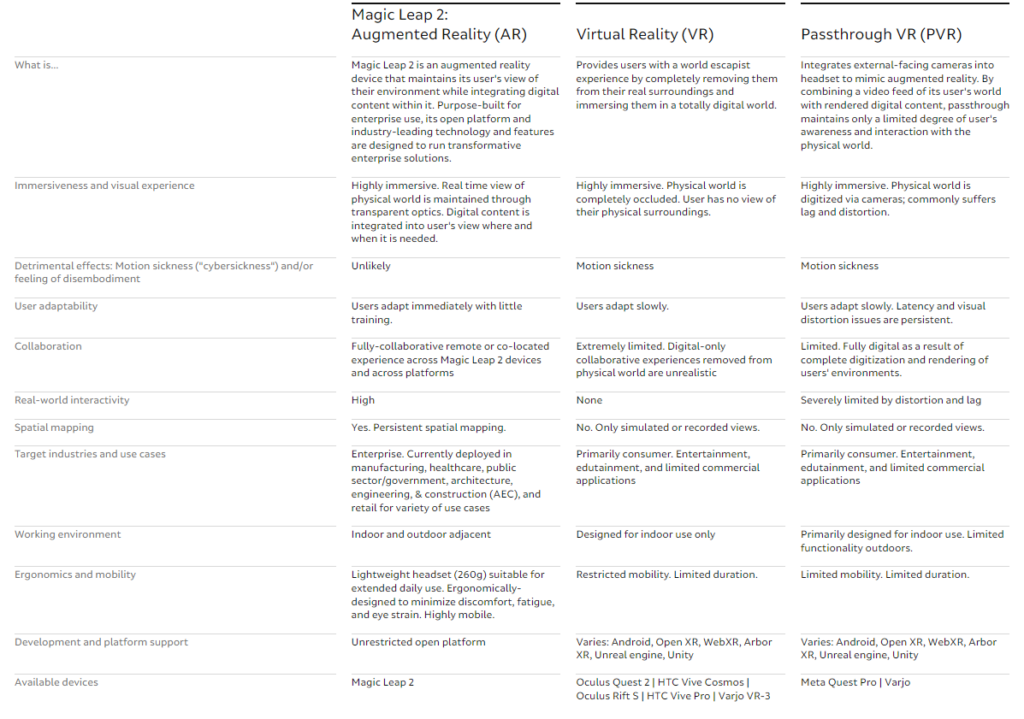
The Omniverse demo was a collaboration with Nvidia, rendering several city blocks on a table with moving cars, flying birds, and numerous other details. The closer you got to the table, the more details you could see.
Choosing a third company/product to highlight was challenging due to numerous contenders, including Xreal’s AR glasses, LetinAR’s lens modules, Leia’s autostereoscopic Lum Pad 2 tablet, ForgeFX and Quantum 3D’s simulations, and RiVR’s training for fire/rescue and law enforcement.
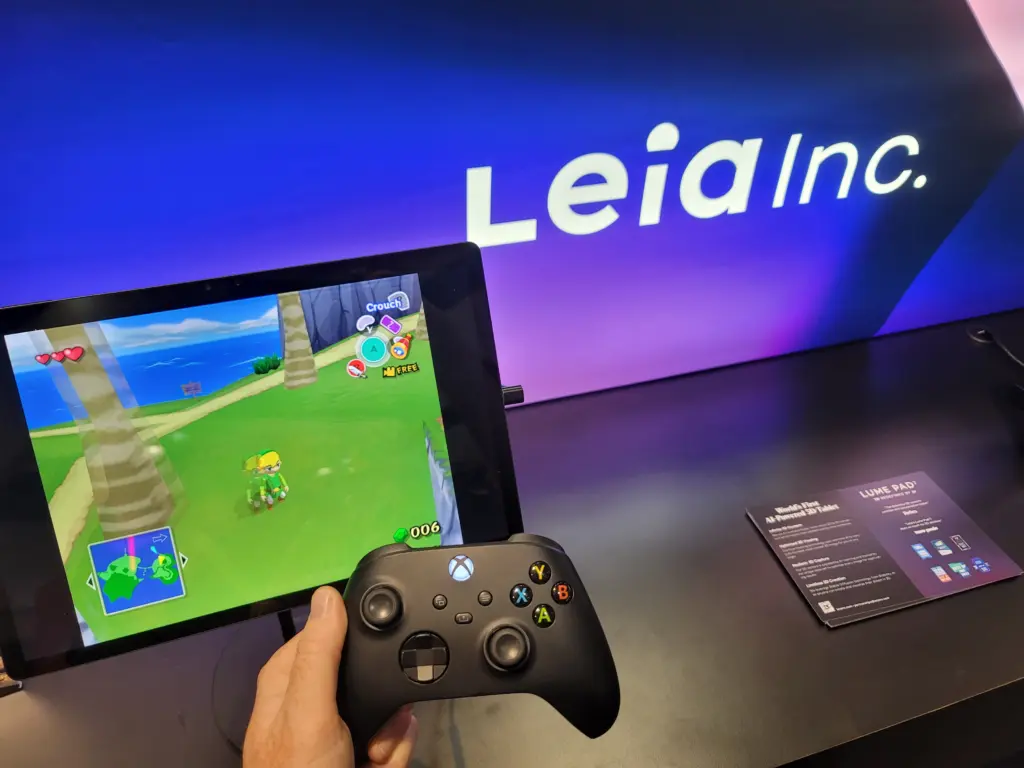
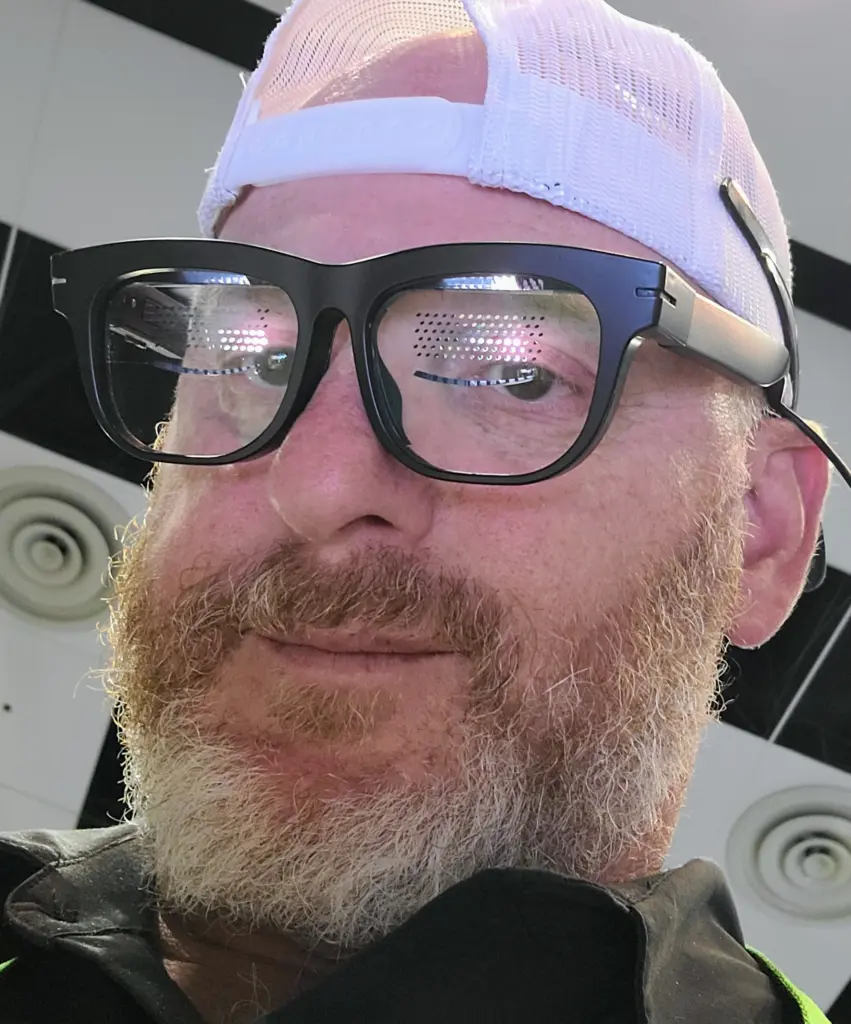

But for the final product highlight, due to my bias as a consultant, analyst, and investor in game tech, I’d like to showcase the Ultraleap mixed reality game board. Developed in partnership with Tilt Five, this holographic game board comes with a mat, headset, and game board, offering players a variety of games in a mixed reality setting.
The Tilt Five headset is lightweight (3.5 oz) for all-day gaming. It utilizes dual 1280×720 PICO projectors with a 110-degree FOV, an 8-megapixel infrared head tracking camera for board detection, wand position and motion, and a tangible tracking camera with the same specs to detect objects. The system is bundled with one, two, or three headsets/wands and ranges in price from $359 to $959.
The XR industry is truly taking off and Apple helped jumpstart the trend, even though they weren’t present at the event! I imagine their products will be featured, at the very least, next year.

